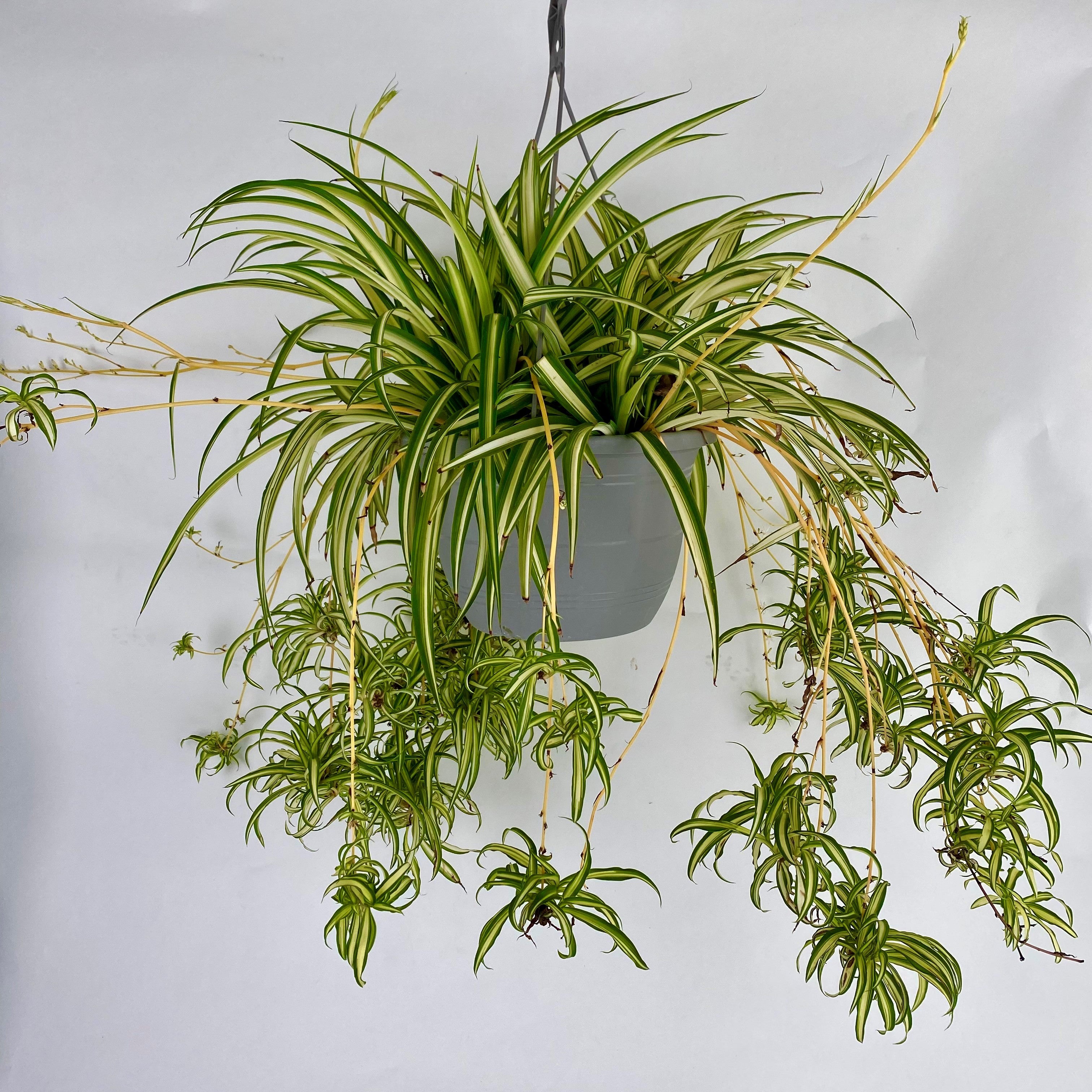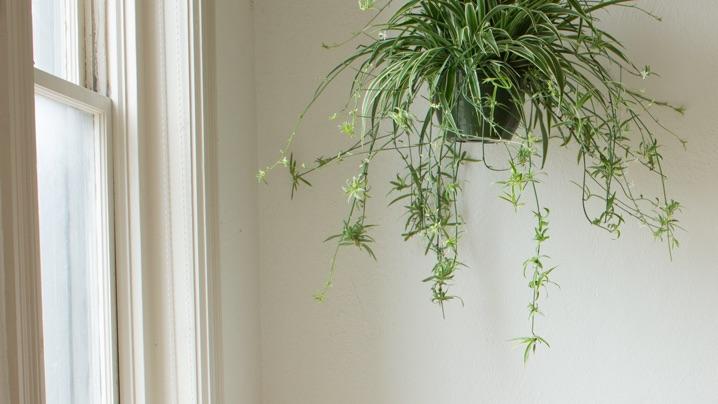The miniature “spiderette” or “pup” variant of the plant, which is frequently seen hanging over the side of the pot, gave rise to the moniker “spider plant.” It definitely resembles the insect from which it gets its name in very low lighting!
Because too much sunlight will bleach and discolor the typically green and white leaves of spider plants, they do not enjoy a place that is overly sunny. However, for at least 8 and possibly up to 10 hours each day, indirect sunshine is required to keep your plant healthy.
Continue reading for some advice on how to make these plants thrive because they also love humid environments.
Table of Contents
Where should you place a spider plant?
The ideal temperature range for spider plants is between 55 and 80 degrees Fahrenheit in a humid, warm environment. Some spider plants, such as the Hawaiian variety, prefer a warmer environment over a colder one, so they thrive best indoors.
In fact, spider plants are among the most popular indoor house and office plants because they add a touch of nature indoors and people like their color and shape in settings with less-than-ideal lighting.
Indirect sunlight is ideal for all spider plant varieties, though they can also thrive in conditions with relatively little light. So the ideal location is in a steamy bathroom near a sunny window, but out of direct sunlight.
Will Spider plants grow in shade?
Since spider plants like indirect sunlight, they thrive in the shade and frequently have particularly attractive leaf color. They enjoy shade because it prevents them from drying out quickly, which is advantageous.
If it’s very sunny outside, place a mister close by your plant and wet it to keep it looking healthy. Avoid placing spider plants in direct sunlight as their leaves will burn.
Can Spider plants live in low light?
They can tolerate low light, and in fact, the color of their leaves frequently looks better because they dislike direct light because it could bleach them.
Because they thrive in the shade, spider plants are frequently placed in shaded areas of offices. Giving them a few hours in a sunny location every so often will help them flourish.
The key rule is to keep them out of direct sunlight, but they can thrive on tabletops or in corners with a combination of fluorescent illumination and indirect sunlight.
Simply move them for a few days, check the soil’s dryness, and water if necessary if they start to lose their vigor.
Can Spider plants grow outdoors?

But if you think of them as annuals, they are charming complements to a patio or garden outside. If the leaves become too dry or receive too much direct sunshine, there may be some sunburned or browned leaves.
So, be aware of the conditions they prefer and make sure the planting area is appropriate. Just make sure you have some of its “spiderettes” already planted and store these inside just in case, so they may spend the winter indoors comfortably no matter what happens to their relatives outside.
FAQs
Why does my Spider plant have brown leaves?
Spider plants typically grow quickly and have spiky, emerald green or emerald green and white striped leaves. They are dissatisfied when their leaves turn brown, which is an indication.
- Check the lights first. If it is direct, you are aware by this point that you need to relocate them to an area with indirect light.
- Second, is the environment humid? Your Spider plant prefers this, so periodically spray the leaves.
- Do you routinely water your Spider plant? Uneven watering, either too much or too little, frequently results in brown foliage. So it’s time to get rid of those brown leaves and consider giving your plant some regular hydration.
- If your water has an excessive amount of fluoride, you could try distilling water and utilizing it to water your plants. For this, you can use boiled water.
- Last but not least, it’s possible that your soil has too much salt, which can develop over time. Try repotting the plant and cross your luck!
Can you make new plants from the mini plants they grow?
No seeds are produced by spider plants. If raised in the wild, the tiny “spiderette” develops on a long stem to enable it to get away from its mother. This provides the perfect distance from the mother plant so that it can still grow roots while separate from the mother plant.
So all that is required for this miniature Spider plant is a pot of soil for its roots to be plunged in. In about a month, you will have a new plant. Simply make sure the roots have established and the plant is firmly planted in the ground, trim the stem, and presto! A wonderful gift for everyone, excluding those who dislike spiders…
Do Spider plants flower?
The stunning, spiky-shaped, green and white striped leaves of your Spider plant occasionally surprise you with a magnificent, white bloom. Some variants have flowers that are yellow. The long, cream-colored stem on which this flower grows is also the stem from which more “spiderettes” sprout. They open during specific hours of the day, typically when the light is the strongest. You may occasionally see an entire stem covered in tiny, opening white buds. They are sensitive to light and close up once more at night.
How many types of Spider plant are there?
Favorite spider plant kinds include:
- Variegated Spider Plant: This plant, which is frequently sold in garden centers, has long, spiked, green and creamy-white-shaped leaves. This plant produces “spiderettes,” which hang ornamentally over the edge of your flower pot, on a regular basis and never seems to stop growing.
- Place the Hawaiian Spider Plant, also known as Golden Glow, in offices and other small spaces where a smaller plant presence is desired. It has deep green spiked leaves and a compact growing habit.
- While the leaves of the Bonnie Spider Plant resemble those of the Variegated Spider Plant, they appear to curl and form really eye-catching visual patterns. Its flowers are typically yellow, as opposed to the variegated variety, and illustrators adore drawing these!
- Zebra Spider Plant: This variety, which gets its name from resembling the animal, grows very quickly. A lovely addition to any space!
- The spider plant known as variegatum is almost the exact opposite of spider plant number 1. This plant is very striking and well-liked among gardeners because of its leaves, which are green in the center and have white edges. Along with Bonnie, it has curved leaves.
Interesting facts about Spider plants:

